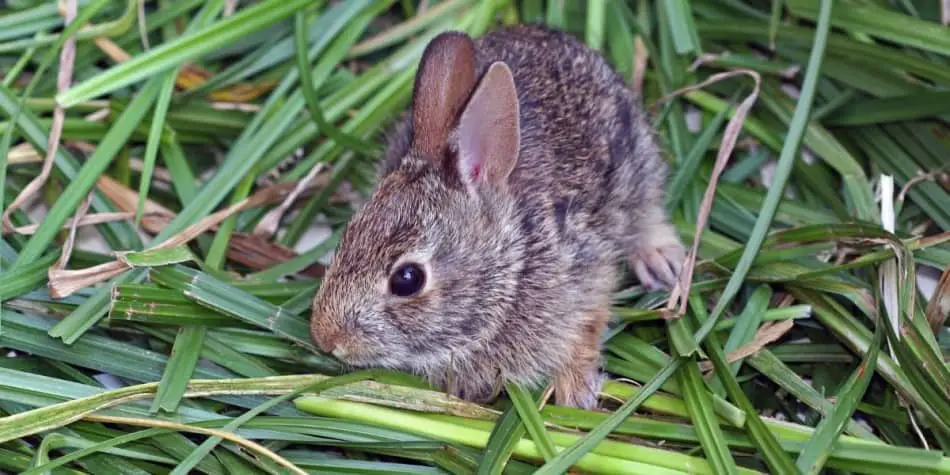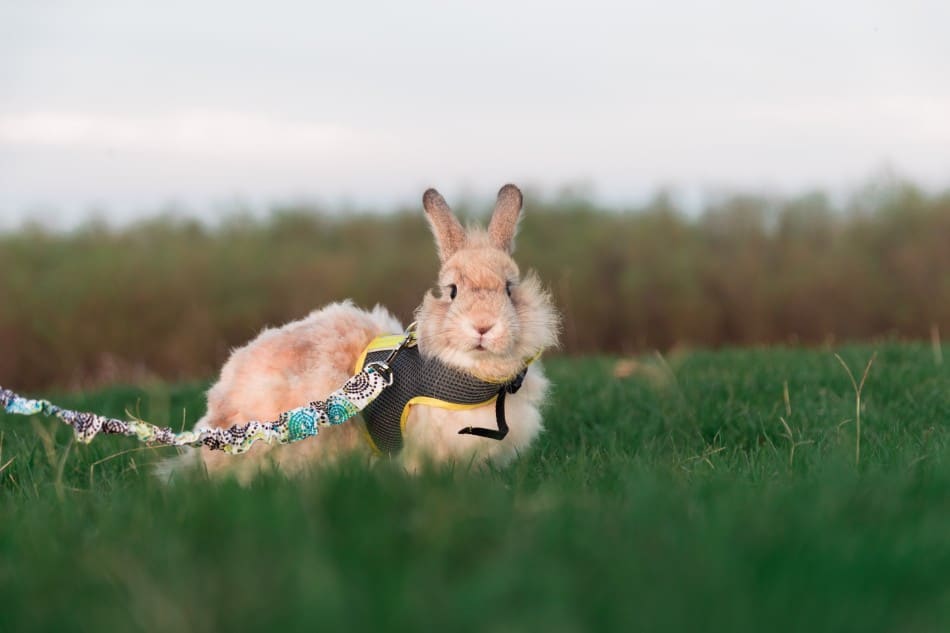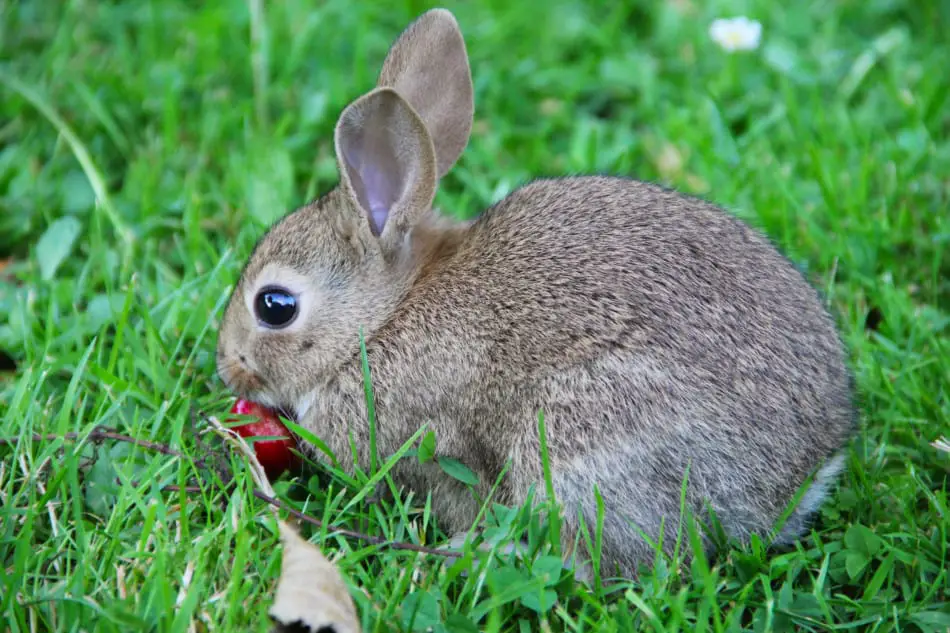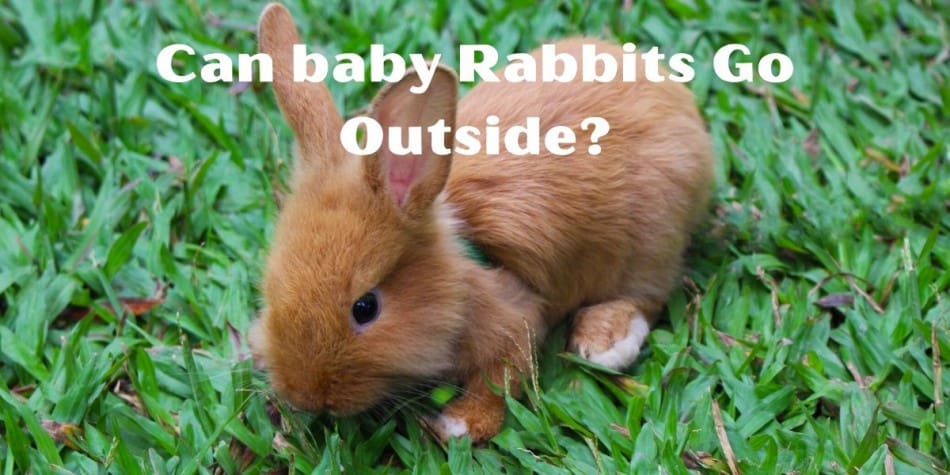Rabbits require daily physical activity to grow healthy so that their muscles and bones do not atrophy, which would cause serious health problems. For this reason, one of the best exercises that the rabbit can do is walk, run and hop around the garden. But when can baby rabbits go outside?
Different rabbit breeders hold different opinions on this; some say two weeks while others say three months. If you decide to take your bunny outside, it will be necessary to take into account a series of fundamental aspects.
Let’s take a closer looks at all the things you’ll need to consider before letting your baby bunny out into the garden.
Table of Contents
A period to get used to freedom
Even adult Rabbits that have spent the winter inside should not be kicked out suddenly into wide open spaces and bright lights. They should be slowly introduced to “freedom” for one or two weeks. Even those who have already been outside or those who live there all year round in a specially furnished hutch cannot move too quickly to avoid shock.
So, imagine the risk of a baby rabbit been put out into the sun and weather elements without taking the time to acclimatize them to the conditions.
And the night?
It is better to put them outside first a few hours, then longer and gradually building the length of time up. Even when it is already hot during the day, the ground can still freeze at night. The rabbit’s coat is not adapted to this type of temperature, and this weakens its immune system, which can make it sick.
Rabbits should not only get used to the weather. They also have to adapt to the food. The space they have in the enclosure and the fresh grass encourage them to eat a lot. To help rabbits’ sensitive stomachs get used to this water-rich food, you can start mixing fresh grass with their food a few weeks before they are first released. You can increase the amount of grass every day in preparation for spending more time outdoors.
Baby rabbits have very sensitive stomachs and will need time to get used to a more varied and natural diet.

Accessories for outdoor life
If you don’t have a garden but want to let your baby rabbit outside then you can transport or take them to a wide-open local grassed area. Somewhere away from people and other animals like dogs and cats.
You must have a suitable carrier with which you can easily transport the rabbit, without suffering and harm or stress until you reach the right place for your walk.
Once released from the carrier, you will need a harness and a strap or a purpose rabbit harness. The harness must be suitable for its size, it should not be too tight or too loose, as it could choke or escape. The leash must be light, avoid strong pulls, as the rabbit’s bones are fragile.

After buying a suitable harness. ( We like this one on Amazon ) , do not immediately go out with a rabbit. Start by putting a corset (without a leash) on the rabbit and letting it run around the apartment in it.
Do this for 5-7 days, 5-10 minutes. If you see that the rabbit is already used to and is feeling fine, then you can go to the next level. Attach a leash and walk around the apartment with it.
Do this for as many days and time. Only after you see that the rabbit feels confident on a leash, you can take the first steps into the street. Walking the rabbit is in closed areas where there is not a lot of noise, cars, etc.
We like this rabbit and pet carrier from Amazon ↗️
Ideal Weather Condition
At the time your baby rabbit goes outside, it should not be too cold or too hot, as this will prevent the rabbit from being affected by colds or heat strokes. An ideal ambient temperature would be between 18 and 25°C.
Where to walk
It is advisable to take the rabbit to the field or to a nearby park where there is grass, avoiding hard floors that could hurt its feet. When the desired area is reached, before removing the rabbit from its carrier, make sure that:
- There are no animals that can attack you (dogs, cats, birds of prey, etc)
- It cannot hide in small places from which it cannot be removed.
- Don’t be at a site that has been fumigated.
- There are no loud noises that can scare the rabbit.

Vaccines
It is necessary that when your baby rabbit goes outside, it is vaccinated, thus preventing it from contracting any disease. If the pet has never walked on the street before, then it should be noted that this should not be done before the age of four months. The rabbit needs to grow and get stronger. It also needs the following vaccinations:
- from hemorrhagic infection – a viral disease in the form of diathesis, which affects rabbits older than a month and a half.
- from myxomatosis – a serious viral disease of rabbits that is transmitted by blood-sucking insects and in contact with a sick animal.
After vaccination, quarantine takes from two to four weeks. During this time, you can buy a harness suitable for walking a rabbit. It is necessary to keep the pet from “escaping.”
It may take several days for the rabbit to get used to the harness. Experiment, and before you go out, bring the animal in a harness to start around the apartment.
Walking with a rabbit is better in the morning or evening, because of the danger of getting a sun or heat stroke. Like the sun, rainy, windy, or damp weather is harmful to the rabbit, walks in such conditions can end in a cold. Walk with him somewhere on an empty lawn, where there is a lot of grass, and he will feel comfortable. Rabbits, by nature, are very active creatures.

They need space, the ability to run and jump. So, do not squeeze them in this right. Take this matter seriously, so your rabbit is always happy. On a walk, you should make sure that the pet plucks only dry grass, it is safe for digestion.
For good walk, transportation of the rabbit to the place of walking is paramount. The pet must feel comfortable during transportation; otherwise, in a state of stress, a walk will not bring it the pleasure you expected.
The best thing to use is a well-ventilated carriage. This is a basic rule that applies to all small pets. Putting an animal in a stuffy vehicle for more than ten to fifteen minutes can result in heatstroke. A crowded public transport will also bring stress.
Letting your baby rabbit out in the Garden
When considering letting your baby rabbit roam free in your garden we suggest that it is suitable to do so from 4 weeks onwards.
However, only if you have a suitable enclosed area. We would also suggest not only the walls and surrounding fence but also the rook is covered. This will prevent large birds of prey and other preditors from taking your tiny baby rabbits.
Even Herons have been know to swoop down and take baby rabbits. With baby rabbits only weighting a few oz and being so vunerable they make easy prey for preditors.
Adult rabbits are also not as protective over their young as some animals are and are not equipped to defect their young.
They have no weapons or sharp claws to warn off larger animals.
Therefore the area should be safe and secure to protect them even when you’re not looking over them.
Again, at first we suggest only a few hours each day and gradually build like up as they grow and become more confident. Still ensuring their protective encolsure is suitable and safe.
Even adult rabbits and very big rabbits like Flemish Giant rabbits are at risk from Fox’s and other preditors.
Final thoughts
Following these simple rules, you will enjoy walking with your beloved pet, and in turn, will be grateful to you for the opportunity to run on fresh grass.
In your own garden or out in a public place always ensure your baby rabbit is safe from predators and most of all not stressed or scared in any way.





